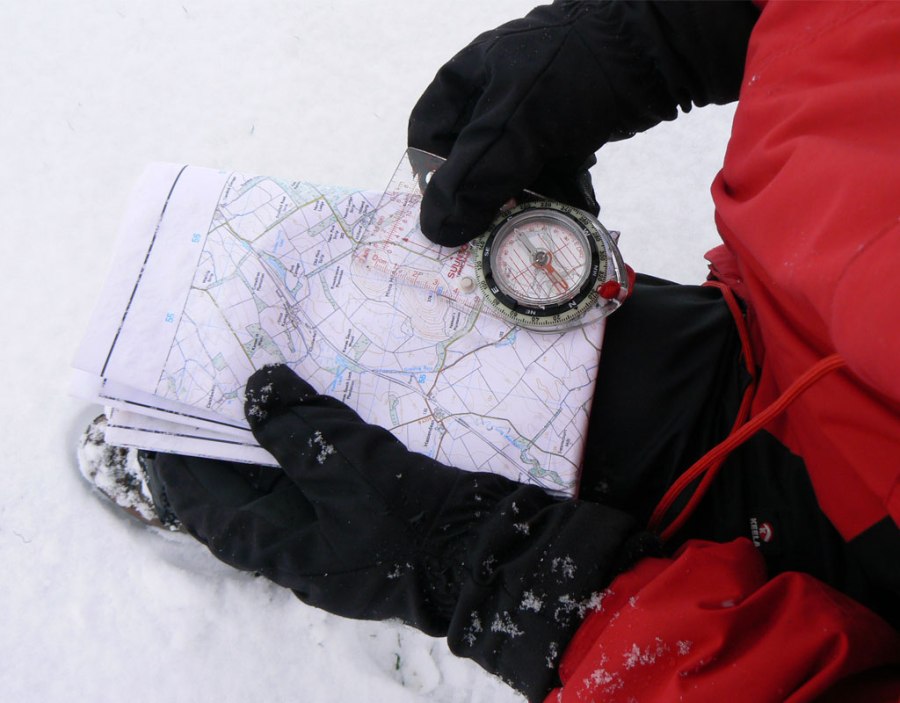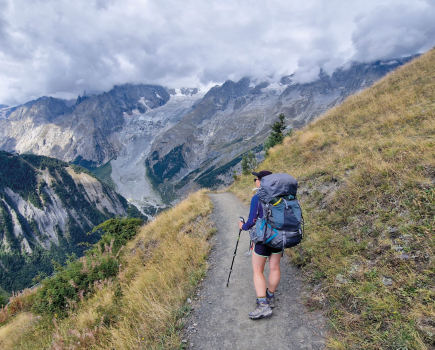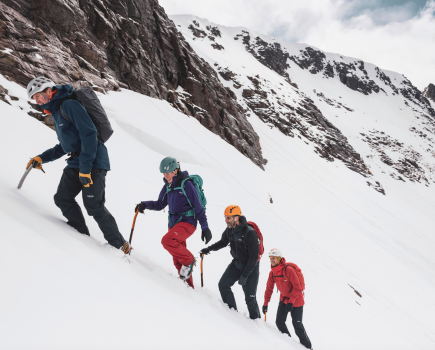A whiteout can be hugely disorientating, but following a few simple measures can minimise risk explains Lyle Brotherton, advanced navigation instructor to mountain rescue teams and special forces
Everyone is aware that shorter daylight hours and the chance of significantly reduced visibility can make navigating in winter more difficult, yet there are also big advantages when navigating in winter.
- The low sun can cast long shadows, highlighting contour features much more than at other times of year, making the interpretation of shapes on the land to the contours on your map more straight forward.
- Sub-zero temperatures can make boggy ground, such as that found on much of the Cheviots and in the Scottish Borders, firm and easier to move over.
- Low pollen and air pollution means the air is clearer and permits high visibility over great distances.
Add to this the sheer magic that a painting of frost can add to your environment, winter becomes one of the most beautiful times of the yearn to explore the great outdoors. In this issue we are going to concentrate on two key navigational tools that can get people out of trouble and show you how to perform them correctly. In this issue we are going to focus on the one winter condition that you can encounter anywhere, from the walking in the North Yorkshire Moors to skiing in the Alps: a whiteout. A whiteout is when you lose the horizon and everything around you, including the sky, appears white. It erases all signs of shadow and definition. You lose perspective, you cannot judge distance… or, indeed, see anything at all. They are dangerous because it is very easy to get disorientated, even within a couple of metres, and the risk of becoming confused and lost is very real. They also increase the risk of falling over a precipice or walking on to a corniced edge of snow that could collapse.
What to do in a whiteout
Frequently, flurries of snow that cause whiteouts soon pass and the best course of action is to stay put, if it is safe to do so. The risks are high and in the absence of a horizon we easily lose our spatial orientation which can also lead to vertigo. If you must move, there are some measures you can employ to minimise this risk.
1. Before moving off, be absolutely certain that you know exactly where you are you cannot navigate safely to another point if you don’t know where you have started from.
2. If you have one, use your handheld satnav (GPS). It will tell you where you are and where to go, but it is important to stress that it does not tell you how to navoid snowdrifts, ice that has covered open water, and avalanches.
3. Whiteouts are frequently a local phenomenon and related to a specific altitude so, if safe to do so, move to a lower position if it is not too far to travel. If your route was from a lower altitude, follow the old track back as it may also give some kind of contrast in the snow.
4. If there is a forest nearby head for this; it will afford some protection from the weather too.
5. If there is a handrail nearby which is near impossible to miss, aim for it.
6. Instead of going straight to your attack point (next destination), use the technique of Aiming Off, if you can.
7. With the loss of an obvious event horizon, it can be difficult to assess
how the ground lies ahead if you are moving up or down. Depth perception is also difficult. Throwing a rope or a snowball out in front is a good method.
Types of whiteout
There are four types of whiteout:
1. During a normal snowfall, a sudden heavy flurry, albeit usually brief, can sometimes strike and create whiteout conditions.
2. In blizzard conditions the volume of wind-blown snow, often mixed with ice particles, is so dense that it is all you can see.
3. On pitch-black nights, even light falling snow can reflect the light from head torches and create a whiteout. Dimming your torch beam can reduce, but not totally eliminate, this effect.
4. This last type happens when low cloud covers the hills, diffusing the light and making the entire environment turn white, even when it is not snowing.








